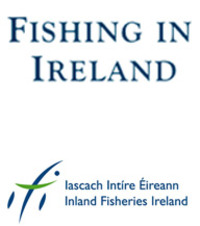


Local Sponsors
-
An angler's guide to the best fishing in Ireland.
Inland Fisheries Ireland. Swords Business Campus Swords Co. Dublin.
Ireland is recognised as being the outstanding fishing holiday destination in Europe. The vast variety and quality of fishing in Ireland makes it the perfect destination for your angling holiday. Please have a look at our guide on our website.
-
Simon's Carwash & Valeting Service
Gas House Bridge, Clonmel Co. Tipperary
Please ring for a quote and ask about the services we offer. Or watch our You Tube video...on the webite link below...
More information
Many thanks to Simon's Carwash & Valeting Service for facilitating this camera's location and to the Inland Fisheries Ireland for their help in arranging its installation. The River Suir, extending for a distance of 185 kilometers, flows into the Atlantic Ocean near Waterford. It is renowned among anglers for its abundance of brown trout. Notably, the Suir holds the record for the largest salmon ever caught in an Irish river, weighing 57lb/26kg and caught with a fly in 1874. Originating from Devil's Bit Mountain, just north of Templemore in County Tipperary, the Suir follows a southern course, passing through Loughmore, Thurles, Holycross, Golden, and Knockgraffon. It merges with the River Aherlow at Kilmoyler, and later with the Tar, before turning east at the Comeragh Mountains, forming the boundary between County Waterford and County Tipperary. The river then flows through Cahir, Clonmel, and Carrick-on-Suir before reaching Waterford. Together with the Nore and the Barrow, the Suir is part of the trio known as The Three Sisters. In Clonmel, heavy rainfall within the upstream catchment area of 2,173km2 can cause the Suir to flood the local area.The Farson streaming webcam is positioned to monitor river levels and fishing conditions at the Old Waterford Road Bridge (R678). It also serves to monitor flooding levels for the town of Clonmel.The flooding tendencies of the River Suir, resulting from intense rainfall in its upstream catchment area of 2,173km2, have prompted the Office of Public Works (OPW) to implement a Flood Forecasting System since 2007. Notable floods include those in 2015 with a flow of 390m3/s, 2004 with a flow of 354m3/s, and 2000 with a flow of 353m3/s. The flood in 2015 was the most severe since 1946, which recorded a flow of 479m3/s. The Clonmel Flood Defence project, designed to handle a 100-year flood, commenced with Phase 1 in 2007, with subsequent completion of Phases 2 and 3 by 2012. In 2014, additional flood protection measures were implemented for properties omitted from Phase 1, including the Convent Road area and the workmen's boat club access to the river. The flooding experienced in October 2014 was categorized as less severe than a 1–5 flood, with a flow of 300m3/s. As part of an OPW media exercise, all barriers were erected.The flood defense system incorporates demountable barriers, walls, and earth banks. Flooding incidents occurred at various locations, including Gashouse Bridge, Coleville Road, Davis Road, the Quays, and the Old Bridge area prior to the establishment of the flood defenses. Clonmel is not affected by tidal influences, as the tide turns above the Miloko chocolate crumb factory in Carrick-on-Suir. Floodwaters spill onto the land on the County Waterford side of the river, upstream of Miloko.Clonmel, meaning 'honey meadow' in Irish (Cluain Meala), serves as the county town and largest settlement of County Tipperary, Ireland. The town gained historical significance for its resistance against the Cromwellian army, which had ravaged the towns of Drogheda and Wexford. Except for the townland of Suir Island, most of the borough lies within the civil parish of "St Mary's," which is part of the ancient barony of Iffa and Offa East.During medieval times, Clonmel experienced significant growth, and remnants of this era can still be found throughout the town. A section of the town walls remains near Old St. Mary's Church, an important architectural landmark. Originally constructed in the 14th century or earlier, the church has undergone multiple reconstructions and renovations. Due to its strategic importance, the church was fortified in its early history, serving the Earls of Ormonde and later the Earl of Kildare. Some fortified sections of the church suffered damage or destruction during the Cromwellian occupation. The West Gate, a 19th-century reconstruction of an older structure, now stands at the former entry point to the town. Originally, Clonmel was protected by three gates—North, East, and West—while the South was guarded by the River Suir and the Comeragh Mountains. The West Gate currently serves as an open arched entrance onto O'Connell Street, the town's main thoroughfare.


